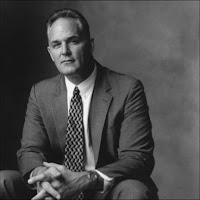The Road to Success -- Avoiding Leadership Failure
By Jerry Wilkinson
 To maximize effectiveness in a leadership role today, there are 5 distinct behaviors to avoid. Most of these pitfalls are covert traps that leave the best-intentioned leader in a “gap” or sorts, unable to sustain “touch” with the business and more important, its customers. Ignored, unnoticed or unchallenged for too long a period of time and it’s easy to see how business setbacks occur.
To maximize effectiveness in a leadership role today, there are 5 distinct behaviors to avoid. Most of these pitfalls are covert traps that leave the best-intentioned leader in a “gap” or sorts, unable to sustain “touch” with the business and more important, its customers. Ignored, unnoticed or unchallenged for too long a period of time and it’s easy to see how business setbacks occur.In tough, economically jarring times like these, no business wants to suffer at the hands of their competitors due to unforced errors of basic leadership best practices that could altogether be avoided. Here are the Top 5:
- Avoid playing desk jockey. It’s akin to riding the bench. No one can create impact if they’re not in the game. The anchor also known as a “desk” is intended for administrative support, customer service and billing personnel, never leaders. No one can effectively lead from behind a barrier.
When you think about it, doesn’t it sound oxy-moronic? “Effectively lead from behind…” Does your leader spend too much time sitting? Solution? Move! Walk right in to the field of play, run if you have to. Be intentional about seeing BOTH your internal and your external customers.
Movement is energy. Utilize your eyes your ears and your words of encouragement. Leave the saddle comfort of the desk for a run in the trenches. - Avoid the stoic demeanor. The less robotic you are the better. You’re not Mr. Spock from the USS Enterprise. You’re human and people want a relationship with their leader. They mostly want to be known by you. Don’t be afraid to engage with your troops to show them you do carry some human-like DNA.
Most people succeed in life when they feel “directed and connected.” When that doesn’t happen, there are signs of unrest and instability amongst the rank and file. “Nobody gets promoted around here” and “Why bother” tends to be the mantra of many outside of the leaders circle.
Unseen or unappreciated employees become more disillusioned than inspired and are generally flight risks joking or posturing to join the competition. Check to see if turnover becomes the norm rather than the exception. Customers like “steady.” Clients appreciate consistency with no surprises. Stable customers become great testimonials and references for new clients.
Robots don’t build relationships, humans do. Make the time to be somewhat engaging, and retain the employees that you know are solid ambassadors for the company. - Avoid following up, checking in and asking the tough questions. Don’t care? They don’t ask. Wasn’t really that important. Couldn’t have been that important. That’s what it seems like to those in a performance-oriented practice (what isn’t these days?) who actually expect the leader to inspect progress.
Leaders with great follow up tend to gain traction faster in everything that is measured. Those that don’t follow up lose ground quick and are at a loss for why. - Avoid making the employees feel like they work for you. Make it appear to others that you’re actually working to help them find and achieve success. The reality of it is, is that subordinates are not employed to equip and empower leaders. It’s the other way around.
Leaders exist to create organizational results. Leaders should be like high-powered consultants. They should be savvy and skilled enough to help expose and overcome challenges while yielding a positive result. Leaders exist to equip and empower others for both the short and long term. What a leader leaves in his or her wake are tell tale signs of their effectiveness.
Servant leaders tend to establish loyalty bonds that can never be broken. Quality leaders have a knack for preparing a foundation for succession planning as they are able to grow fresh understudies with ambitious designs.
Have you ever noticed the come-back factor in play? Athletes and students always return to the place(s) where they grew the most under the tutelage of a former teacher or coach. Why is that? - Avoid letting passion fade. People come to work as a means to build a life (style) for themselves they couldn’t otherwise do without a job. While there are differing levels of internal motivation to do a job well there are moments when a leader can inspire his or her team to brilliant contribution.
Outstanding leaders need to be in touch with an appropriate(ness) “clock”, meaning they need to know the right time(s) to challenge, to reward, to celebrate, to recognize, to appreciate and to have fun.
An engaged leader has the pulse of his team wired. He knows when to tick them up a notch and when to downshift. A great leader NEVER gets a day off in the passion category because people watch and feed off of the tempo the leader creates. If the leader is not the most inspired, enthusiastic and motivated person in the company it becomes extremely difficult pass this characteristic on within the culture.
Perseverance, the dogged determination that brings people back to the fight each and every day comes from a discipline born out of passion. The desire to become a little bit better (at something, anything) than the day before means to make every minute marching toward achievement counts.
- Movement. Spotted in the trenches, movement not only gathers respect, it helps leaders understand first hand what elements are in play both inside (and outside) the business. This has a profound affect on a leaders with decision making capability.
- Human DNA. Connectors of humans are more approachable. More approachable human beings display authenticity. This transparency often helps others become attached to something larger than themselves, and when this occurs, “team” emerges and a fan base is built.
- Evaluator-forensics. The ability to ask, dissect and help determine next step measures equips leaders to help problem solve by making subtle adjustments to new (or old) challenges. This is the half-time speech and plan!
- Servant leadership. One who equips, empowers and is able to help others strive to reach personal bests in contribution and performance is a rare find. When you see it, grab it. Make sure this individual is on your team and not the competition.
- Passion. Got pulse? Most of the best coaches in the world would agree on this one thing, “You cannot coach ‘heart.’ ” When you see it, you’ve got to capture it. Recruit it, draft it, trade for it. Humans are drawn to motivation, and motivation is a matter of the heart.
 Jerry Wilkinson works with organizations interested in “next level” performance. For more than 20 years, his leadership style and business experience as Vice President of Sales, Marketing and Business Development for firms ranging in size from $4 million to more than $400 million in annual sales provide a platform for sales and market-share growth as well as people development.
Jerry Wilkinson works with organizations interested in “next level” performance. For more than 20 years, his leadership style and business experience as Vice President of Sales, Marketing and Business Development for firms ranging in size from $4 million to more than $400 million in annual sales provide a platform for sales and market-share growth as well as people development. As a championship athlete and professional football player, Jerry has had the privilege of working alongside a cache of world-class coaches who have impacted and influence his energy, work ethic and dedication including Dee Andros, Craig Fertig, John McKay, Don James, Ralph Miller, Ray Malavasi, Sam Rutigliano, Bill Walsh, Tom Flores, and John Ralston not to mention business leaders and mentors from the healthcare, legal services, and consumer products industry who played a role in his development.
Jerry resides in Mission Viejo, California with his wife, Brenda.